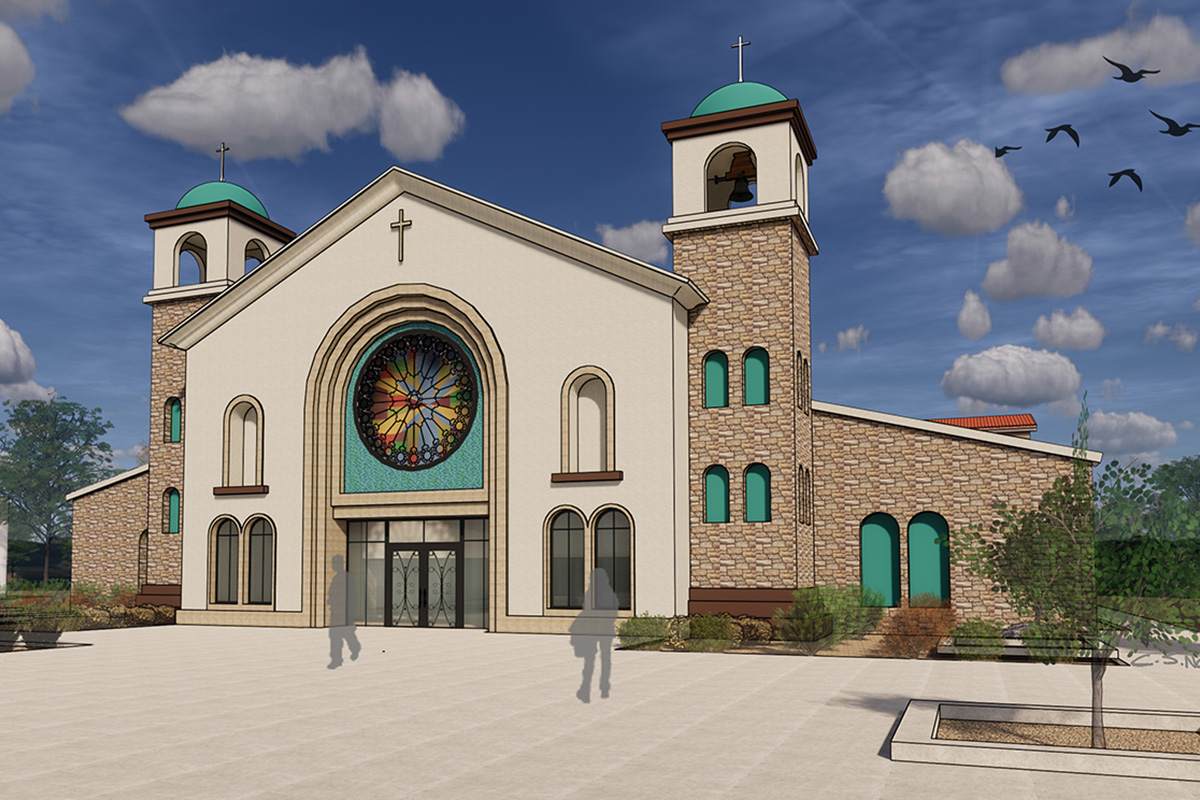Table Of Content
- Wallachian Church Structure
- CONSTRUCTION DOCUMENTS
- What is minimalist church architecture?
- Parish Church of Santa Monica, Spain
- Innovative Design. Stewardship Driven.
- Images of church architecture from different centuries
- How does modern church architecture cater to contemporary worship practices?
- Konishi Gaffney repurposes church into versatile community hub

He did make it, as head of Fox West Coast, and the cathedral near Pico and Normandie is the multimillion-dollar proof. It was built in 1952, a long, long way — in every sense — from the warehouse north of downtown where L.A.’s Greeks held their first church services around 1906. Weekly updates on the latest design and architecture vacancies advertised on Dezeen Jobs.
Wallachian Church Structure
It was a screen on which icons are hung and which conceals the altar from the worshippers. Also, it featured an enclosing the interment space or burial chamber of a deceased person. The mausoleum of a noble Roman was a square or circular domed structure that housed a sarcophagus. One of the famous circular, mausoleum-like structures is the Church of the Holy Sepulchre in Jerusalem. Over the years, we know that the number of features and designs of church buildings has grown.

CONSTRUCTION DOCUMENTS
Over the years, it has evolved by innovation and by imitating other architectural styles. Interestingly, if we look carefully at these structures, we can also see how they reflect Christianity’s changing beliefs, local traditions, and practices. Some popular church architectures have come from different eras in the expanse of 2,000 years. Many prestigious churches have become prominent symbols of Christian and world history. One of the defining characteristics of innovative church building designs is the use of unconventional layouts.
Falls Church's Birch & Broad Shopping Center Wins Top Design Award - Patch
Falls Church's Birch & Broad Shopping Center Wins Top Design Award.
Posted: Fri, 08 Dec 2023 08:00:00 GMT [source]
What is minimalist church architecture?
Not just creating functional environments for people to do the work of church, but space where users can have a brand new, safe, intuitive real-life experience. In the early 16th century, the Reformation brought a period of radical change to church design. On Christmas Day 1521, Andreas Karlstadt performed the first reformed communion service. In early January 1522, the Wittenberg city council authorized the removal of imagery from churches and affirmed the changes introduced by Karlstadt on Christmas.
After the victory of the Roman Empire in 312 A.D, Christianity became a religion of the empire. They started the Christian church architecture as a response to civic and imperial forms. Hence, the Basilica, a large rectangular meeting hall, became the model for most churches. The architectural structure contains a nave and aisles, galleries, and clerestories. Throughout decades, many churches around the world have become popular for their intricate structures and designs.
Innovative Design. Stewardship Driven.
Also, church architecture provides the process of development for both practical function and symbolism. They roofed the projecting arms with domes or semi-domes that were lower and adjoined the central part of the building. Byzantine churches maintained a definite axis towards the apsidal chancel, which commonly extended further than the other apses.
Ultimately, contemporary church interior design creates a sacred space that invites congregations to connect with their faith, find solace, and engage in worship on a profound level. Whether through versatile seating arrangements, a worship-centered layout, or aesthetic accents, contemporary church interior design aims to foster a sense of belonging and spiritual connection. It creates a space where individuals can find solace, inspiration, and community. One key aspect of contemporary church interior design is the incorporation of versatile seating arrangements.
These churches demonstrate that modernity and spirituality can coexist in harmony, creating spaces that inspire awe, foster connection, and facilitate meaningful religious experiences. They are a testament to the evolving nature of church architecture and its ability to adapt to the ever-changing needs and sensibilities of society. In Making Dystopia, Curl explores the negative consequences of modernist architectural movements that abandoned beauty and tradition. The book argues that this shift has resulted in the loss of the inherent spirituality and cultural significance that churches once possessed. Curl urges architects and designers to draw inspiration from the past in order to create innovative, yet spiritually meaningful, church designs for the future. Architects are breaking away from traditional, symmetrical layouts and experimenting with asymmetry, irregular shapes, and unexpected angles.
Konishi Gaffney repurposes church into versatile community hub
Notable examples of mid-century modernist churches include the Church of the Holy Cross in Vienna, Austria, the Metropolitan Cathedral Liverpool in England, and the Council Memorial Church in Vienna. In East Asia, Taiwan is one of several countries famous for its church architecture. In modern architecture several churches have been inspired to use traditional designs. These include the Church of the Good Shepherd in Shihlin (Taipei), which was designed by Su Hsi Tsung and built in the traditional siheyuan style. The chapel of Taiwan Theological College and Seminary includes a pagoda shape and traditional tile-style roof. In the 20th century, the use of new materials, such as steel and concrete, has had an effect upon the design of churches.
Futuristic church buildings push the boundaries of traditional design, creating awe-inspiring spaces for worship. By studying and appreciating the history of church architecture, society can work towards reviving the beauty and meaning of these sacred spaces. This can involve incorporating innovative designs, sustainable practices, and a fusion of modern and traditional elements. Modern church architecture has evolved over time to reflect the changing needs and sensibilities of society. From mid-century modernist designs to contemporary innovations, modern churches have embraced a wide range of styles and approaches while remaining dedicated spaces for worship and contemplation.
Such churches are generally rectangular, but in African countries where circular dwellings are the norm, vernacular churches may be circular as well. A simple church may be built of mud brick, wattle and daub, split logs or rubble. However, church congregations, from the 4th century onwards, have sought to construct church buildings that were both permanent and aesthetically pleasing. This had led to a tradition in which congregations and local leaders have invested time, money and personal prestige into the building and decoration of churches. State-of-the-art church facilities are designed to meet the modern needs of congregations, offering versatile multipurpose spaces and advanced technology. These facilities may include flexible auditoriums, gathering areas, classrooms, and dedicated spaces for youth and children’s activities.

No comments:
Post a Comment